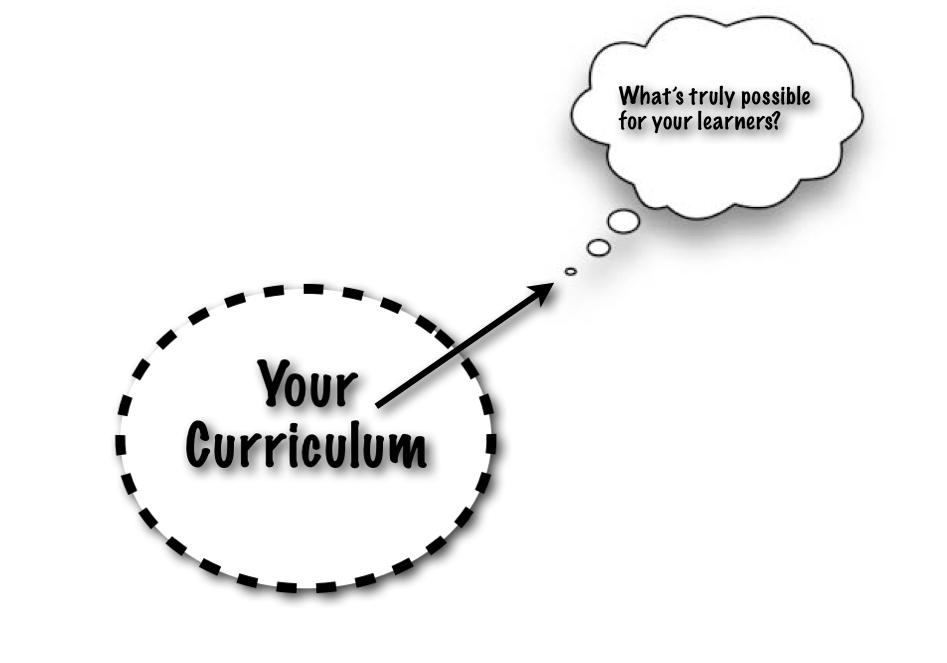What a simple brick and blanket can teach us about our practiceI’ve thoroughly enjoyed digging back into Gladwell’s Outliers book over the past week. Even though I had previously read the book, I have been listening to the audiobook version this time around and thinking more deeply about some of the big ideas that Gladwell presents. As Gladwell’s work has been a focus of mine over the past week, I’d like to share more thoughts that have resonated with me. In one part of the book, Gladwell discusses intelligence testing, in particular the work of Lewis Terman, a pioneer in educational psychology in the early 20th century. Gladwell writes in depth about Terman’s work regarding longitudinal studies he had done on children with high IQs. Terman believed that these genius children would go on to do extraordinary things in the world and should be groomed to do so. While a good majority of these child prodigies went on to do impressive things later in life, many didn’t and Gladwell surmised that there was a missing element within these people that prevented them from achieving the success that Terman thought they would undoubtably achieve. To illustrate his point, Gladwell discusses a totally different type of test that doesn’t measure IQ, but something else instead. A divergence test requires people to use their imaginations and to let their minds go in as many different directions as possible. To some schools and businesses divergence testing now holds just as much weight as intelligence testing because it helps to provide a more complete assessment of a person’s abilities and aptitudes. Gladwell provides an example of one particular divergence test. The test simply states, how many different uses can you think of for a brick and a blanket. It’s called a ‘Use of Objects’ test. Anyone taking a divergence test is given a specific amount of time to come up with as many different and unique answers as possible. It’s not as easy as it sounds and requires a total shift in thinking. Gladwell provides example answers of 2 different students who took the brick and blanket test administered by Liam Hudson at a prestigious British high school in the UK. Student A is probably a good student, but not considered to be a genius in any way while student B is a prodigy with one of the highest IQs in the school. Student A provided a clever, unique and very creative list of possible uses of a brick and a blanket whereas student B struggled and came up with only the obvious.
I’m using the divergence test example from Gladwell’s book to really get you thinking about how you approach delivering your own curriculum. As we plan the lessons and units that we teach in PE and other subjects, we really need to take the brick and blanket ‘use of objects test’ approach. We need to think, without limits, from multiple perspectives and viewpoints in order to open our minds and tap into all of the learning possibilities that exist for our students. This is one of the very favorite parts of my planning process. Even though some of the ideas I come up with could never take shape, once I go through the process of planning in this manner, the impossible always morphs into something that is possible. My best teaching moments have been a result of taking this approach to planning my lessons and units in PE. At times, I think that teachers can become too rigid with curriculum and assessment which results in feeling quite constrained. I have seen all too many times, teachers feeling trapped within the curriculum they teach due to testing requirements and other demands placed upon them. I know it is not easy for these educators, but taking a different approach to planning can open the doors of possibility, yet still focus the learning on what is required. Pushing ourselves to use our imaginations more when planning helps to create more unique learning opportunities for our students. Would like to hear your thoughts.
2 Comments
8/2/2014 05:41:32 pm
The brick and blanket example from Gladwell's book was fantastic. I have yet to read the book but really understood the creative process of lesson/ unit planning you are explaining. I have not done this I usually come up with a couple ways that I feel the students would learn the curriculum outcomes.
Reply
8/3/2014 05:36:14 am
Loved this book! Hopefully curriculum is written in a way that is not prescriptive to the point it takes away creativity from teachers. As well, PETE professionals must teach models of instruction and learning theory so teachers can plan for all types of learners. Moreover, lifeskills must be a key piece of planning if we want to increase likeliness our students go into the world as active folks who do good! :) thanks for sharing!
Reply
Leave a Reply. |
AuthorKAUST Faculty, Pedagogical Coach. Presenter & Workshop Leader.IB Educator. #RunYourLife podcast host. Archives
September 2022
|
- Welcome
- All Things Teaching and Learning
- The Aligned Leader Blog
- Consulting and Coaching Opportunities
- My TED X Talk
- My Leadership Blog
- Run Your Life Podcast Series
- How PYP PE with Andy Has Helped Others
- Good Teaching is L.I.F.E
- The Sportfolio
- Example Assessment Tasks
- PYP Attitude Posters (printable)
- Publications



 RSS Feed
RSS Feed
